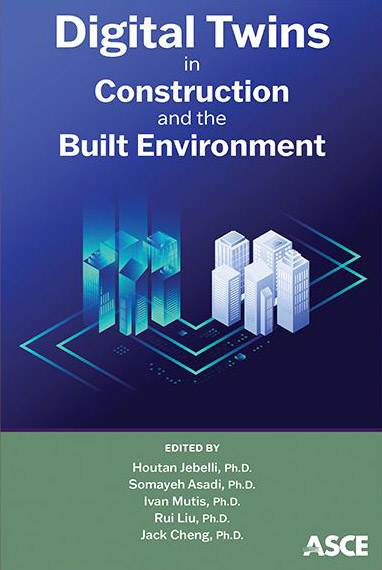By Ines Aviles-Spadoni, M.S., Research Coordinator
An exciting new technology is helping scientists and engineers monitor bridge infrastructure, identifying maintenance issues before they become serious.
This new technology, highlighted by Aaron Costin, associate professor at UF’s M.E. Rinker, Sr. School of Construction Management and Alireza Adibfar, (UF 2020), project manager at Project Management Advisors, Inc., in their book chapter titled “Digital Twin for Bridges and Structures: Practical Applications and Challenges,” has the potential to transform the way structural engineers manage bridges. The chapter is included in the book Digital Twins in Construction and the Built Environment published by the American Society of Civil Engineers (ASCE).
“Advancements in Digital Twin technology combined will all of the streams of bridge data- monitoring sensors, weather, traffic – provide a dynamic approach to managing critical infrastructure, enabling real-time monitoring, predictive maintenance, and proactive decision-making for the cost-effective repair and resilience urgently needed in the U.S.,” Costin said.
The concept of digital twin technology is straightforward. It creates a 3D model, which is a digital version of a real-world object such as a bridge that updates in real-time through sensors that collect data, feeding it back to the digital twin, replicating the bridge’s current state. Digital twins, through the information from the sensors, track, monitor, and simulate a bridge’s structural changes, the effects of weather and traffic, and even the impact of natural events such as earthquakes. This information is vital because it allows structural engineers to identify issues related to wear and tear that need immediate attention.
Another appealing aspect of digital twin technology beyond monitoring is that it allows engineers to interact with the digital version of the bridge through virtual reality (VR) and augmented reality (AR). As a refresher, an example of VR is the Samsung Gear VR headset, which allows users to simulate an environment they can interact with as if they were there. As for AR, think of Pokemon GO as an example where players see the character appear in their real-world environment, such as in their yard or home through their cell phones.
The digital twin technology allows engineers to use VR to “walk” through the bridge, inspecting its condition without being there in person. Through AR, the virtual model is superimposed over the actual bridge, which could allow engineers and inspectors to conduct a virtual inspection identifying any issues or structural deficiencies with great accuracy.

“Digital twins allow managers to overcome previous limitations. This centralized, connected system enhances the infrastructure management process, enables proactive planning, and, with AI integration, is set to transform infrastructure management, paving the way for more resilient and sustainable systems,” said Adibfar.
Costin and Adibfar propose a framework that integrates current transportation technologies to produce a digital twin bridge to make the authors’ vision of resilient and sustainable infrastructure a reality. They discuss how the Internet of Things (IoT), structural health monitoring, artificial intelligence (AI), and intelligent transportation systems play essential roles. These systems ensure the sensors embedded in bridges keep the digital twin updated through continuous communication between the physical and digital versions. The authors call this a smart feedback loop, which helps engineers predict problems for faster and more efficient bridge maintenance.
“A bridge digital twin is not just a tool for monitoring; it’s a revolutionary approach that, when combined with AI and data analytics, empowers engineers to anticipate issues and address them before they escalate, ultimately extending the lifespan of our infrastructure and ensuring public safety,” Costin said.
A bridge digital twin has the potential to transform the way engineers and bridge inspectors maintain and protect the structures that help connect our daily lives and keep our cities and towns flourishing. However, the broader implementation of this technology for widespread adoption is still being developed.
“We are still a few years away from the full implementation of digital twin technology for bridges, as challenges and research opportunities remain in areas such as technology integration, high-performance computing, cybersecurity, and the need to navigate complex policy and regulatory frameworks,” Costin said.

